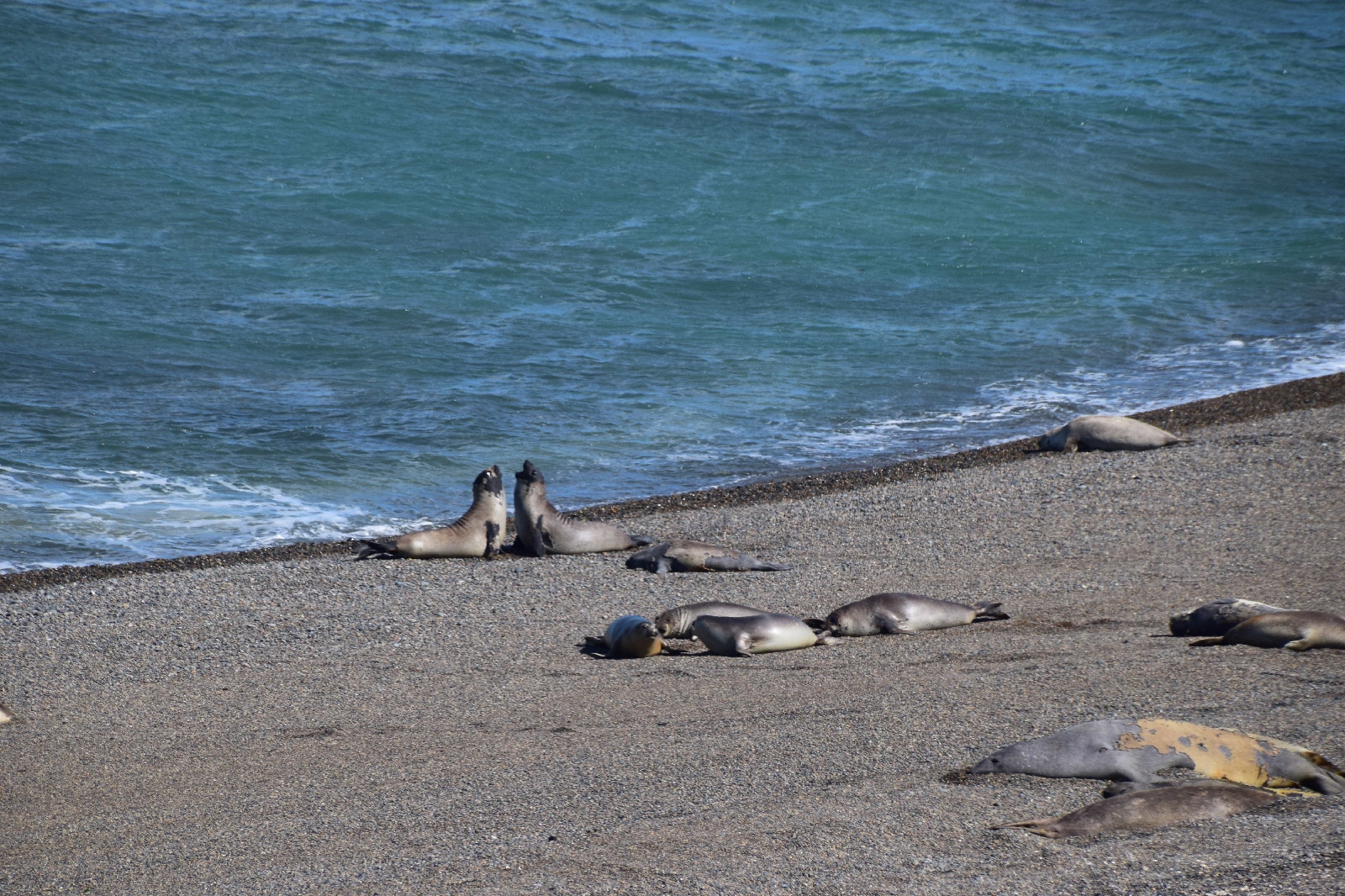The Valdes Peninsula is a nature reserve. We went to see nature. We knew we had to pay an entrance fee and had looked it up on the Internet and it was a paltry 700 pesos. Either we had an old website or inflation had kicked in again because it was now 7,200 pesos. Some eateries we go to, very few are restaurants as we would recognise them at home, no longer have prices. Presumably they are tired of reprinting them. Others just have little stickers next to the item with hand written prices. Anyway, back to wildlife.
The entrance charge did give you access to the Visitor Centre which told us that there was paved road to the village, Puerto Piramides where we had booked accommodation. But everything else was unpaved. So we set off and almost immediately came across Guanacos, which are like llamas. The road had a fence either side which seemed totally pointless as these guys can easily jump over them as one proved after a couple of kms - he was 100m in front of us which led to only a slight wobble.
There was yet another Falklands sign on entering the town. It is really difficult to know where people stand on this - people visiting the UK probably say the same about us and Brexit.
Our accommodation was a converted shipping container - it was brilliant and the lady who met us to give us the key, an artist called Sil, went out of her way to help us and booked us on a whale watching trip for that afternoon.
The area is a nursery for Southern Right whales and the mothers and their young ones were still around, but likely to be leaving for Antarctica in a couple of weeks or so. We did not know what to expect but it was absolutely BRILLIANT - thank you Sil. We had mothers and their babies right next to the boat. On a number of occasions they passed under the boat. At one stage the tail fin ran down the side of the boat. They were so close you could hear their song. About 200m away we also saw whales breaching.
We were so motivated that the following day we decided that we would go and see sea lions, which would involve a 5km gravel track to get there. We were kept awake most of the night by very high winds. All whale watching boats for the next day were cancelled - we had been very lucky indeed the previous day. Paul was very careful (ie slow) with his 5km there and back on the gravel road, but it was very quiet and all went well. The majority of the sea lions were however sheltering from the wind at the foot of the cliff.
Bolstered by the success of the morning's trip and the wind having dropped, we decided to venture further in the afternoon to see elephant seals and penguins. But this would mean a 75km trip on gravel roads to get there. And of course, the same to come back. Apart from the morning's adventure, Paul's experience riding off-tarmac had been limited to some gravel carparks at pubs. It was pretty scary for all concerned with lots and lots of corrugations running across the width of the road that shook you to bits at low speed. When the bike started slip sliding Paul of course slowed down and then the vibrations kicked in. All very well to say you go fast enough to just skim over the top of the corrugations, but we weren't always up to it. Equally all very well to say it is easier if you stand up on the footrests, but that doesn't work with two of you. And why didn't we move to the side where, when the corrugations were really bad, the cars went? Well there it was really soft stuff and we thought it might be worse. But we survived. There and back. All for FOUR penguins - that's all we saw there. And the elephant seals from a distance.
Puerto Piramides, the village where we were staying exists
because of the three salt flats in the middle of the peninsular as this was the port that served for sending the salt to Buenos Aires at the end of the 19th century. A lot of the houses from that time have had their usage recycled in order to preserve the buildings which are fundamentally corrugated sheet and timber. We breakfasted at Aunt Alicia's which had a total of three tables and a sofa so you need to get there early!















